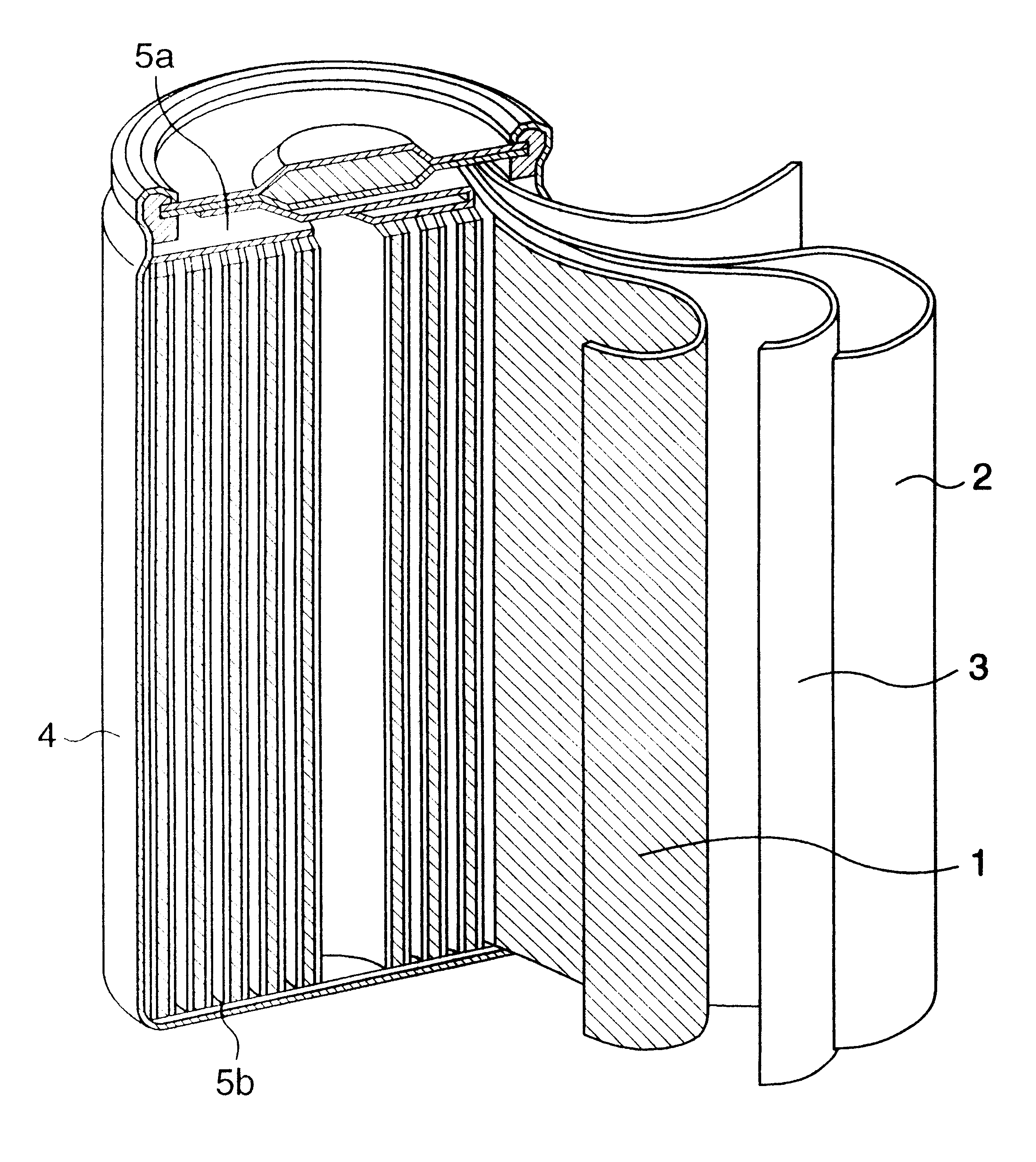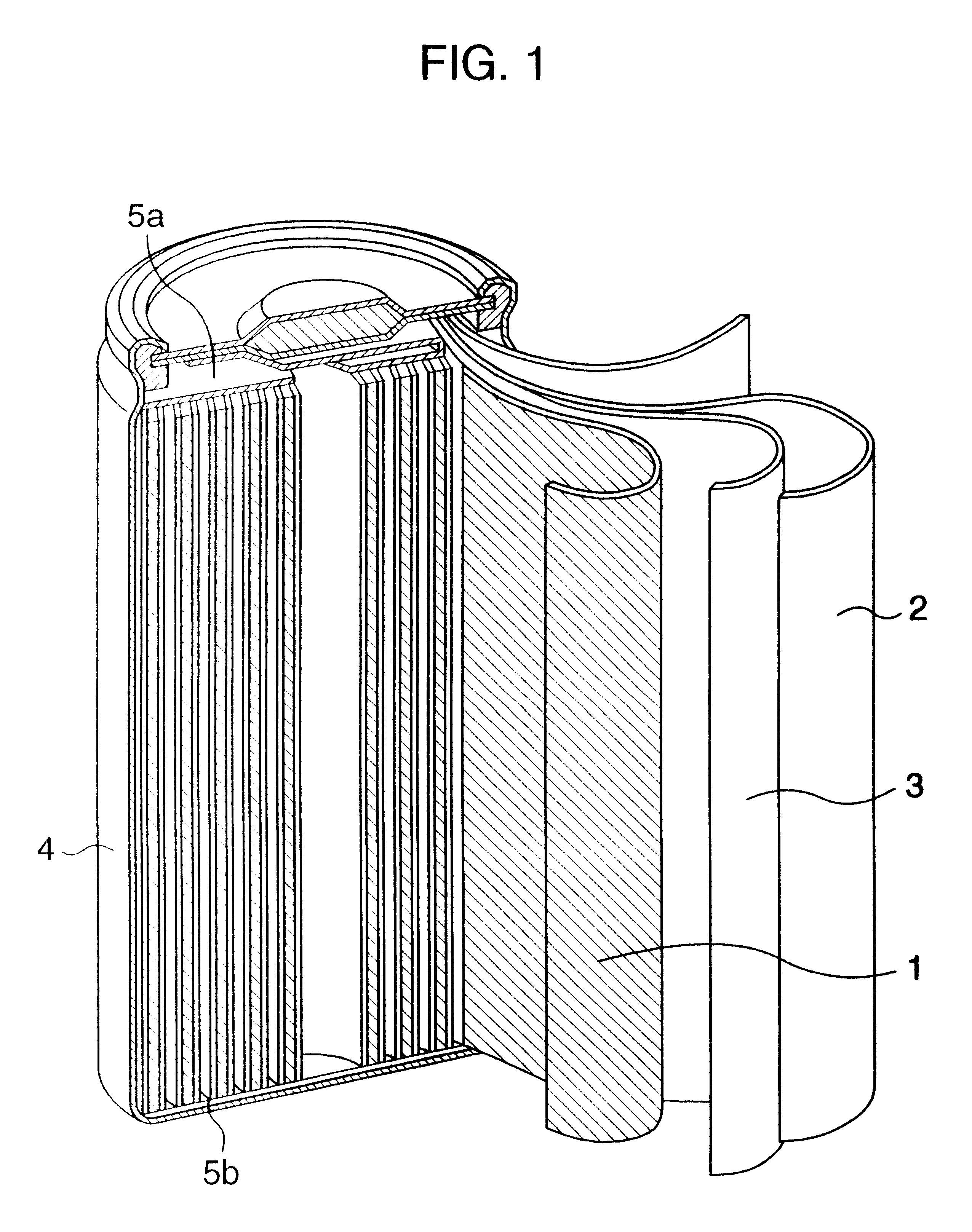Alkaline storage battery
a technology of alkaline storage batteries and alkaline accumulators, which is applied in the direction of alkaline accumulators, cell components, and nickel accumulators. it can solve the problems of metal hydride storage batteries, nickel-cadmium storage batteries, and nickel-cadmium storage batteries, which show a marked decrease in discharge capacity when discharged at high electric currents
- Summary
- Abstract
- Description
- Claims
- Application Information
AI Technical Summary
Problems solved by technology
Method used
Image
Examples
example 1
The negative electrode material used was prepared by grinding a hydrogen absorbing alloy having an alloy composition of MmNi.sub.3.5 Co.sub.0.75 Mn.sub.0.4 Al.sub.0.3 (Mm representing a mixture of rare earth elements) in a wet ball mill to an average particle diameter of about 30 .mu.m.
The hydrogen absorbing alloy powder prepared above was treated in an aqueous KOH solution at 80.degree. C. with stirring to remove soluble components from the powder surface. To 100 parts by weight of the resulting hydrogen absorbing alloy powder were added 0.15 part by weight of carboxymethyl cellulose, 0.3 part by weight of carbon black, 0.8 part by weight of a styrene-butadiene copolymer and then a suitable amount of water as a dispersant to make up a paste.
The paste was coated on both surfaces of a nickel-plated iron punched plate and dried. Then the plate was pressed at varied pressures to prepare negative electrode plates having varied negative electrode capacity per unit area. These plates were...
example 2
Investigations were made of the desirable ratio of the capacity of that part of the negative electrode which is opposed to the positive electrode, in other words, the "opposed capacity ratio" of the negative electrode. The negative electrode plates used were prepared in the same manner as in Example 1. The positive electrode plates used in combination with the negative electrode plates were of the same material as in Example 1 but were prepared by changing the size (length and width) of the sintered substrate without varying its thickness. By using these electrode plates, batteries E, F, G and H were prepared which differed in the opposed capacity ratio of the negative electrode as shown in Table 2.
The "opposed capacity ratio" of the negative electrode was calculated as the ratio of the capacity of its part which is opposed to the positive electrode to the total capacity of the negative electrode.
The batteries prepared above were subjected to the discharge characteristic test in the...
PUM
 Login to View More
Login to View More Abstract
Description
Claims
Application Information
 Login to View More
Login to View More - R&D
- Intellectual Property
- Life Sciences
- Materials
- Tech Scout
- Unparalleled Data Quality
- Higher Quality Content
- 60% Fewer Hallucinations
Browse by: Latest US Patents, China's latest patents, Technical Efficacy Thesaurus, Application Domain, Technology Topic, Popular Technical Reports.
© 2025 PatSnap. All rights reserved.Legal|Privacy policy|Modern Slavery Act Transparency Statement|Sitemap|About US| Contact US: help@patsnap.com


